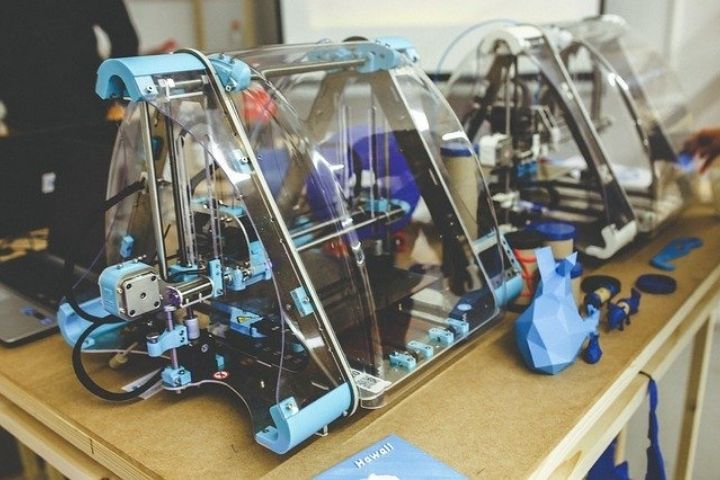3d Printers are those Printing figures in three dimensions. It is a technology that has been increasingly popular. Currently, companies use machines that do this job saving many costs.
Table of Contents
What Is A 3D Printer?
A 3D printer is a machine capable of creating volumetric parts or models, replicas or duplicates, physical and real 3D designs with volume, from a design made by a computer and collected from a 3D scanner.
They convert 2D into 3D prototypes. They are frequently used in the prefabrication of parts or components.
Nowadays, its use has spread in the manufacture of medical prostheses, as well as in the production of complicated parts, since 3D printing allows each part manufactured to be adapted to its exact characteristics, whether they belong to a patient or from a prototype or from a factory
To achieve this exact replica they use liquid plastic or other materials, instead of the ink we are used to, which after printing solidifies and creates the object.
The truth is that 3D printers is something magical, incredible, being able to create objects from nothing from a design. Something as simple as a vase, or a fork or much more complicated and difficult objects such as the parts of an airplane, human organs using a person’s own cells or who knows, since they are a true technological revolution.
When Was 3D Printing Invented?
In 1992, the 3D Systems brand began to manufacture the first printer of the stereo lithographic type. A photosensitive resin is cured with beams of ultraviolet light, solidifying it.
In 1999, the department of regenerative medicine at the Wake Forest Institute began 3D printing organs created from stem cells and, therefore, generating almost zero rejection in the person in which it is implanted.
In 2002, the same institute designed a miniature 3D kidney.
In 2005, RepRap opened its doors, at the University of Bath, building a replicable 3D printer: it could print its own parts, in general, to be able to make another like it.
In 2006, the first machine was invented that uses a laser to melt materials in the printing process. These are selective laser synthesization printers. A supplier deposits thin layers of powder of different metals like aluminum, titanium and steel and a laser then fuses each layer with the previous one.
In 2009, the 3D bioprinter was created, with which the first blood vessel was printed.
In 2011, a drone made in 7 days was manufactured.
What Are The Types Of 3D Printers?
These 3D Printers are classified according to the technique they use to print.
3D SLA (Stereolithography) Printers:
An ultraviolet light is applied to a light-sensitive liquid resin, which must be deposited in a bucket. In this way, the resin solidifies layer by layer due to the ultraviolet light.
SLS 3D Printers (Selective Laser Sintering):
It allows the use of powdered materials such as glass, polystyrene nylon among others. The powder is hit by the laser, melts it and it solidifies resulting in the object to be created.
3D Injection Printers.
It is the most similar to common printers, due to its injection system. But instead of injecting the ink drops onto the paper, it injects the liquid photopolymer in layers.
FDM Printing (Deposition of molten material):
This technique consists of heating and moulding the polymer contained in rolls, to be deposited layer by layer on a flat base, so that in this way it solidifies while it takes the desired shape.
What Are The Different Materials Used For 3D Printers?
As traditional printers use ink cartridges, the materials used to print on a 3D printers can be different and vary, as does the 3D printing price, depending on the object to be printed. The main materials are thermoplastic although some use nylon, metal among others …
Plastic materials are the most widely used as they allow them to be heated and moulded easily. The main 3D filaments used are PLA, ABS, HIPS, FilaFlex, and others that contain additives such as wood and rubber.
The 3D filaments made of ABS (acrylonitrile butadiene styrene) guarantee that the object to be printed will be resistant and strong. ABS is the plastic with which they create pieces like those of Lego or the one found in some appliances.
3D PLA (polyacid lactic) filaments are considered a total success of 3D printing. It is of natural origin and is obtained from corn starch as well as from sugar cane. At the time of printing, it does not emit toxic or harmful gases and the objects created are biodegradable. The surfaces of these objects will be very shiny and the finish at the corners will be of better quality.
